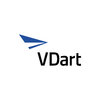
i
11:11
Systems
Filter interviews by
11:11 Systems Senior Devops Engineer Interview Questions and Answers
13 Interview questions
K8s is a container orchestration platform that automates deployment, scaling, and management of containerized applications.
K8s architecture consists of a master node and worker nodes.
Master node manages the cluster state and schedules workloads on worker nodes.
Worker nodes run the containers and communicate with the master node.
K8s uses etcd for storing cluster state and API server for communication.
K8s also has v...
Ingress is a Kubernetes resource that manages external access to services in a cluster.
Ingress acts as a reverse proxy and routes traffic to the appropriate service based on the URL path or host.
It allows for multiple services to share a single IP address and port.
In AKS, we can use Ingress to expose our application to the internet or to other services within the cluster.
We can configure Ingress rules to specify w...
Trigger pipeline from specific version of app code
Use version control system to track code changes
Configure pipeline to trigger on specific branch or tag
Pass version number as parameter to pipeline
Use scripting to automate version selection
Integrate with CI/CD tools for seamless deployment
Ensure high availability of VM and AKS worker nodes
Use availability sets for VMs to distribute them across fault domains and update domains
Use node pools in AKS to distribute worker nodes across multiple availability zones
Implement auto-scaling to add or remove nodes based on demand
Monitor node health and set up alerts for failures
Regularly update and patch nodes to ensure security and stability
I have worked on Azure App Service, Azure Functions, and Azure DevOps.
Azure App Service was used for hosting web applications and APIs.
Azure Functions were used for serverless computing and event-driven scenarios.
Azure DevOps was used for continuous integration and deployment.
We used Azure DevOps to automate the deployment of our applications to Azure App Service and Azure Functions.
We also used Azure DevOps for s...
Node affinity and pod affinity are Kubernetes features that allow you to control the scheduling of pods on nodes.
Node affinity is used to schedule pods on specific nodes based on labels or other node attributes.
Pod affinity is used to schedule pods on nodes that already have pods with specific labels or attributes.
Both features can be used to improve performance, reduce network latency, or ensure high availability...
Default inbound/outbound NSG rules when we deploy VM with NSG
By default, all inbound traffic is blocked except for traffic that is explicitly allowed by a rule
By default, all outbound traffic is allowed
Inbound rules are evaluated before outbound rules
Default rules can be modified or deleted as per requirement
Yes, I have exposure to PCI/DSS compliance.
I have experience implementing security controls to meet PCI/DSS requirements.
I have worked with teams to ensure compliance during audits.
I am familiar with the 12 requirements of PCI/DSS and how to implement them.
I have experience with tools such as vulnerability scanners and log management systems to ensure compliance.
I have worked with payment gateways and understand t...
Test connectivity to AKS app from Azure Front Door
Create a test endpoint in AKS app
Add the endpoint to Front Door backend pool
Use Front Door probe feature to test endpoint connectivity
Check Front Door health probes for successful connectivity
Pipeline variables are scoped to a single pipeline, while variable groups can be shared across multiple pipelines.
Pipeline variables are defined within a pipeline and can be used in tasks within that pipeline
Variable groups are defined at the project level and can be used across multiple pipelines
Variable groups can be linked to Azure Key Vault for secure storage of sensitive information
Pipeline variables can be o...
11:11 Systems Senior Devops Engineer Interview Experiences
1 interview found
I applied via Monster and was interviewed before Aug 2021. There were 2 interview rounds.
(4 Questions)
- Q1. What are Terraform life cycles ? and how do we use them ?
- Q2. What are TF provisioners ? Describe their use cases
- Q3. Azurecloud services that you worked on ? discuss their use cases in detail at your workplace ?
- Ans.
I have worked on Azure App Service, Azure Functions, and Azure DevOps.
Azure App Service was used for hosting web applications and APIs.
Azure Functions were used for serverless computing and event-driven scenarios.
Azure DevOps was used for continuous integration and deployment.
We used Azure DevOps to automate the deployment of our applications to Azure App Service and Azure Functions.
We also used Azure DevOps for source...
- Q4. What is ingress in Kubernetes and how does it helps us while we deploy an application in AKS ?
(10 Questions)
- Q1. Discuss architecture of K8s in detail ?
- Q2. What is nodeaffinity and pod affinity in k8s?
- Ans.
Node affinity and pod affinity are Kubernetes features that allow you to control the scheduling of pods on nodes.
Node affinity is used to schedule pods on specific nodes based on labels or other node attributes.
Pod affinity is used to schedule pods on nodes that already have pods with specific labels or attributes.
Both features can be used to improve performance, reduce network latency, or ensure high availability.
Exam...
- Q3. Difference between pipeline variables and variable groups in Azure DevOps?
- Q4. How to trigger a pipeline from specific version of Application code ?
- Q5. What are stages involved in release pipeline ? Explain the code
- Q6. Any exposure to PCI / DSS compliance ?
- Ans.
Yes, I have exposure to PCI/DSS compliance.
I have experience implementing security controls to meet PCI/DSS requirements.
I have worked with teams to ensure compliance during audits.
I am familiar with the 12 requirements of PCI/DSS and how to implement them.
I have experience with tools such as vulnerability scanners and log management systems to ensure compliance.
I have worked with payment gateways and understand the im...
- Q7. Default inbound/outbound NSG rules when we deploy VM with NSG? Explain them
- Ans.
Default inbound/outbound NSG rules when we deploy VM with NSG
By default, all inbound traffic is blocked except for traffic that is explicitly allowed by a rule
By default, all outbound traffic is allowed
Inbound rules are evaluated before outbound rules
Default rules can be modified or deleted as per requirement
- Q8. Monitoring tool experience? explain the kind of monitors you might have set for monitoring infra?
- Ans.
I have experience with various monitoring tools and can set up monitors for infrastructure health, performance, and security.
I have experience with tools like Nagios, Zabbix, and Prometheus.
For infrastructure health, I set up monitors for CPU usage, memory usage, disk space, and network connectivity.
For performance, I set up monitors for response time, throughput, and error rates.
For security, I set up monitors for una...
- Q9. How do we test connectivity to our app in AKS from Azure Front Door?
- Ans.
Test connectivity to AKS app from Azure Front Door
Create a test endpoint in AKS app
Add the endpoint to Front Door backend pool
Use Front Door probe feature to test endpoint connectivity
Check Front Door health probes for successful connectivity
- Q10. How do we ensure high availability of VM and AKS worker nodes ?
Interview Preparation Tips
- Terraform
- Kubernetes
- Azure cloud
- Datadog
- Monitoring
- log managment
- AKS
- JIRA
- service now
- Agile Methodology
- Azure automation Account
- Backpup and DR
Skills evaluated in this interview
Top trending discussions






Interview questions from similar companies

I applied via Recruitment Consultant and was interviewed in May 2021. There were 3 interview rounds.
Interview Questionnaire
4 Questions
- Q1. Much on kubernets
- Q2. How to setup infra through terraform in aws
- Q3. Docker file to be created
- Ans.
Dockerfile for a Node.js application
Use a base image of Node.js
Copy package.json and install dependencies
Copy application code
Expose the port used by the application
Set the command to start the application
- Q4. Log files to be transferred to AWS s 3
- Ans.
Log files can be transferred to AWS S3 using various methods.
Use AWS CLI to transfer log files to S3
Use AWS SDK to transfer log files to S3
Use AWS Data Pipeline to transfer log files to S3
Use AWS Lambda to transfer log files to S3
Use third-party tools like Logstash or Fluentd to transfer log files to S3
Interview Preparation Tips
Skills evaluated in this interview

Senior Software Engineer Interview Questions & Answers
Saama Technologiesposted on 10 May 2020
I applied via Recruitment Consultant and was interviewed in Apr 2020. There were 4 interview rounds.
Interview Questionnaire
2 Questions
- Q1. Object Oriented Concepts and basic list/tuple/dictionary/ datetime conversion
- Q2. Project done in last company and how will you help Saama?
Interview Preparation Tips

Senior Software Engineer Interview Questions & Answers
Saama Technologiesposted on 8 Feb 2025
I appeared for an interview before Feb 2024.
(2 Questions)
- Q1. Form based JS questions. String questions in javascript
- Q2. React interview questions with some state management follow up questions.
Interview Preparation Tips

I applied via Approached by Company and was interviewed before Apr 2021. There were 5 interview rounds.

(2 Questions)
- Q1. Basic core java questions
- Q2. Prior financial experience
- Ans.
Yes
Worked as a software engineer at a financial institution for 5 years
Developed and maintained financial software applications
Implemented complex financial algorithms and calculations
Collaborated with financial analysts and stakeholders to understand requirements
Ensured compliance with financial regulations and security standards
(2 Questions)
- Q1. Core java coding questions on strings, filereader, arrays
- Q2. Questions on rest services methods and implementation
(1 Question)
- Q1. Previous experience questions
Interview Preparation Tips

I applied via Approached by Company and was interviewed in Dec 2022. There was 1 interview round.
(2 Questions)
- Q1. Sql question, joins , store procedure
- Q2. Mvc question, mvc frame work
Interview Preparation Tips

I applied via Naukri.com and was interviewed before Oct 2023. There were 2 interview rounds.
(4 Questions)
- Q1. SQL query to join 3 tables
- Ans.
Use SQL JOIN to combine data from 3 tables based on a common key.
Use INNER JOIN, LEFT JOIN, or RIGHT JOIN depending on the desired result
Specify the columns to select from each table
Use ON clause to specify the join condition
- Q2. Spring boot annotations
- Q3. Hibernate annotations
- Q4. Java 8 Streams + Lambda
(3 Questions)
- Q1. Working style: Independent contributor or Team
- Q2. Are green-field projects alright?
- Ans.
Green-field projects are great opportunities to start fresh and implement new technologies.
Green-field projects allow for creative freedom and innovation
They provide the opportunity to work with the latest technologies and tools
Starting from scratch can lead to cleaner code and better architecture
Examples: Developing a new mobile app, creating a new website from scratch
- Q3. Are you ok with learning new tech stacks?
- Ans.
Absolutely! I thrive on learning new technologies and adapting to evolving tech stacks to enhance my skills and project outcomes.
I actively seek out new technologies through online courses and tutorials, such as learning React for front-end development.
In my previous role, I transitioned from Java to Python for a machine learning project, which improved our data processing capabilities.
I enjoy participating in hackatho...
Interview Preparation Tips
- Java
- Spring Framework
- Hibernate
- Angular
- Data Structures
Skills evaluated in this interview

Senior Software Engineer Interview Questions & Answers
Saama Technologiesposted on 18 Jun 2024
(2 Questions)
- Q1. About the project. and asked what i did in project. how to create schema in pyspark. what is ADE. what are the difficulties i faced in project. what is spark submit command how we write sparksubmit command...
- Q2. No of occurrences of letter in a string.
- Ans.
Count occurrences of a letter in a string.
Iterate through each character in the string and count occurrences of the specified letter.
Use a hashmap to store the count of each letter.
Handle both uppercase and lowercase letters to ensure accurate counting.
Skills evaluated in this interview

Senior Software Engineer Interview Questions & Answers
Saama Technologiesposted on 2 Jan 2022
I applied via Naukri.com and was interviewed in Dec 2021. There were 4 interview rounds.
Interview Questionnaire
4 Questions
- Q1. Informatica scenario based questions
- Q2. Told to write complex sql queries based on some informations.
- Q3. Agile methodology
- Q4. What do you know about Saama
Interview Preparation Tips

Senior Software Engineer Interview Questions & Answers
JoulestoWatts Business Solutionsposted on 12 Apr 2024
I appeared for an interview before Apr 2023.
(1 Question)
- Q1. There was simple DSA question ,
Interview Preparation Tips
11:11 Systems Interview FAQs
Some of the top questions asked at the 11:11 Systems Senior Devops Engineer interview -
Tell us how to improve this page.
11:11 Systems Interviews By Designations
- 11:11 Systems Project Manager Interview Questions
- 11:11 Systems Storage Engineer Interview Questions
- 11:11 Systems Senior Engineer Interview Questions
- 11:11 Systems Specialist Interview Questions
- 11:11 Systems Relationship Manager Interview Questions
- 11:11 Systems Senior Devops Engineer Interview Questions
- 11:11 Systems Senior Software Engineer Interview Questions
- 11:11 Systems Process Associate Interview Questions
- Show more
Interview Questions for Popular Designations
- Senior Software Engineer Interview Questions
- Senior Engineer Interview Questions
- Devops Engineer Interview Questions
- Senior Systems Engineer Interview Questions
- AWS Devops Engineer Interview Questions
- Cloud Devops Engineer Interview Questions
- Azure DevOps Engineer Interview Questions
- Associate DevOps Engineer Interview Questions
- Show more
Interview Questions from Similar Companies
|
System Engineer
45
salaries
| ₹4 L/yr - ₹8.3 L/yr |
|
Senior Engineer
39
salaries
| ₹9.8 L/yr - ₹16.5 L/yr |
|
Specialist
38
salaries
| ₹16 L/yr - ₹26.3 L/yr |
|
Backup Administrator
37
salaries
| ₹4 L/yr - ₹7.6 L/yr |
|
Senior Systems Engineer
36
salaries
| ₹8 L/yr - ₹13.8 L/yr |

Cyfuture

JoulestoWatts Business Solutions

Value Point Systems

Black Knight
- Home >
- Interviews >
- 11:11 Systems Interview Questions











